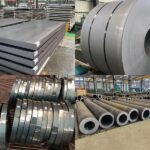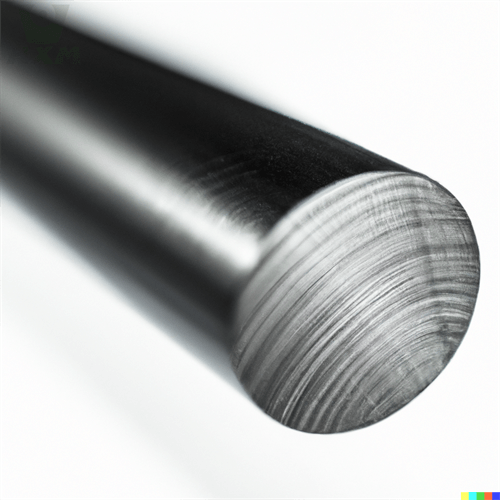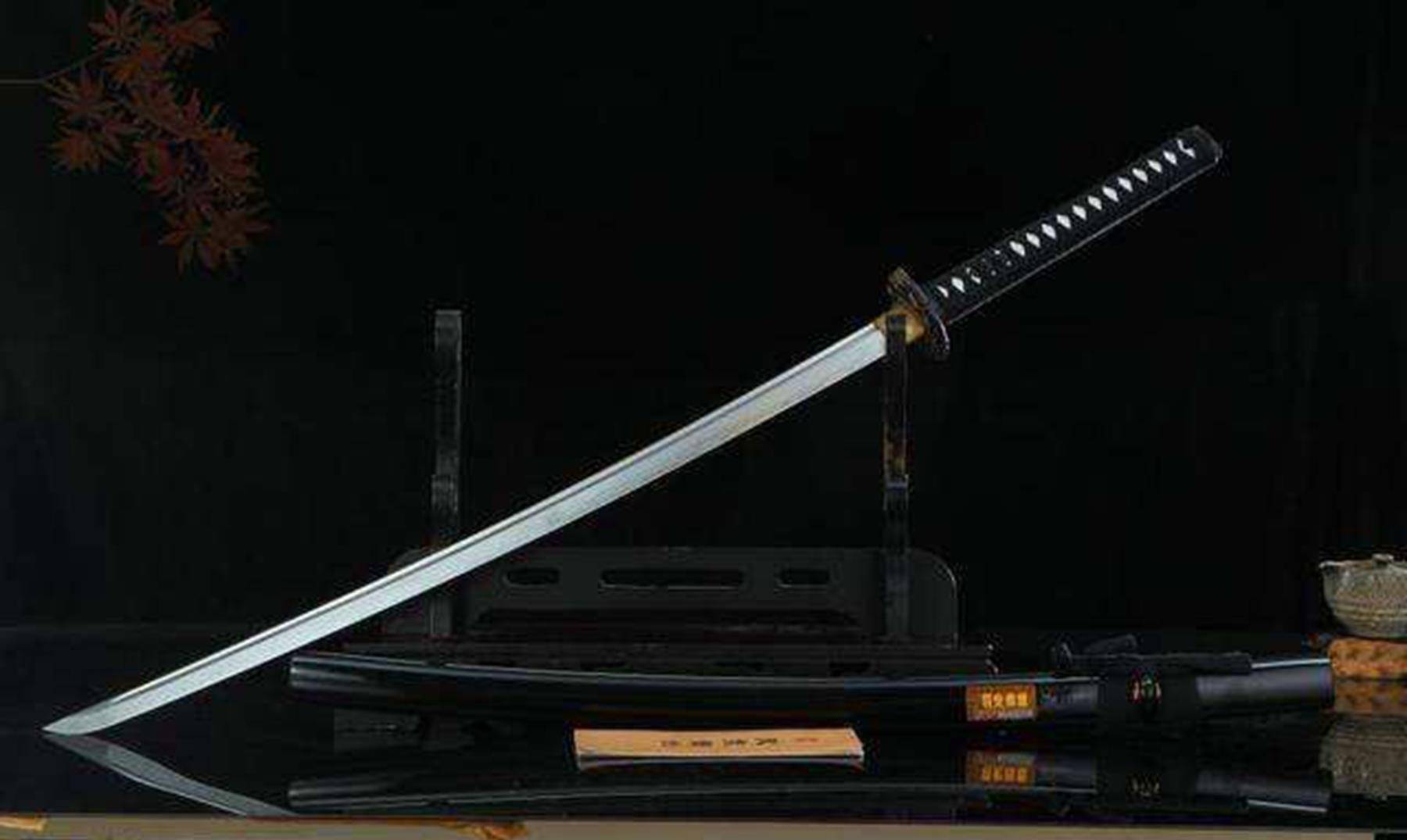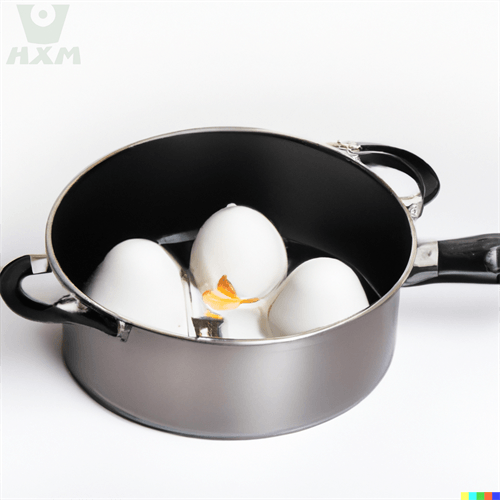Measures and research of steel rolling process based on improving roll life
Post Time: 2022/12/15
In recent years, by optimizing the steel rolling process and improving the performance of the rolling device, the hardness, heat crack resistance, and impact resistance of the roll have been effectively improved and greatly enhanced, thus reducing the roll consumption and extending the service life of the roll.
This paper focuses on the analysis of the irregular deblocking in the middle of the hot rolled narrow strip, the cracking of the roll ring, and the pitting in the roll groove. Implement improved roll cooling to suit the current condition of the production line. With this device and water supply device, the cooling effect of the roller table can be effectively improved, the width of the roll ring can be appropriately increased, cracks and falling off can be avoided, and appropriate roll materials can be selected.
The system can not only correct uneven falling blocks in the middle of the raceway, but also solve problems such as cracks and pits in the roll ring, and improve the efficient operation efficiency of the roll.
Roll is a very important equipment. The roll is in direct contact with the billet, and the billet is deformed by a certain pressure during the rolling process, so as to achieve different steel quality standards.
Therefore, there is a high requirement for the anti fatigue strength and wear resistance of the roll. Especially in recent years, with the increasing market demand for steel rolling products, the roll consumption in the steel rolling production process is too high, which increases the production input cost. In this situation, how to improve the productivity of steel rolling, reduce the frequency of roll replacement and prolong the service life of rolls has become the focus of the metallurgical industry.
The roll works under the conditions of high temperature, high pressure, alternating cold and hot, iron oxide scale, etc. Under the action of mechanical stress, friction, thermal stress and impact load, the rollers of each stand are easy to wear, crack and peel, which greatly shortens the service life of the rollers. Roll is an important production link of rolling mill, and its purchase cost is relatively high. Roll consumption is an important economic indicator, which is an important indicator of production costs.
1. Importance of prolonging the service life of rolls
Roll is an important workpiece, which can continuously plastic deform metal on the rolling mill, and has high consumption. It accounts for a large part of production costs.
Through the perfect roll management system, the management personnel can clearly know the status and track of each roll, so that the rolls can be correctly paired and used, maximize the utilization rate of rolls, and formulate appropriate grinding quantity, which can not only reduce roll fatigue, make the rolls meet the standard of normal production, improve the service life of rolls, reduce abnormal roll change, but also improve the production efficiency of the rolling line and increase production efficiency. Whether the roll management system is sound and how well it is managed are the key factors to reduce the production cost of the rolling line and extend the service life of the roll.
A specially assigned person is required to manage the rolls, establish a roll management system, and make records on the acceptance of rolls entering the warehouse, pairing use, roll cracks, abnormal unloading, etc. Through a series of such operations, the use track and status of each roll will be managed and controlled, which is crucial to reduce roll consumption and increase roll service life.
2. Problems of rolls in production
2.1 Irregular block falling at the center of rolling groove
Excessive chemical composition of copper in all parts of the rolling groove center will easily lead to irregular block falling. Especially, whenever the central part of the entire rolling groove is heated, a large amount of copper may flow back and forth continuously on the inner surface of the central part of the entire rolling groove.
Once the copper is formed into a low temperature melting point, its thermoplastic properties will be greatly reduced, which will also lead to many cracks on the inner surface. Moreover, with the copper flowing back and forth, the cracks will continue to expand and extend, and to a certain extent, irregular block falling will occur. Take hot-rolled narrow strip steel as an example.
Due to inadequate daily supervision, the rolling amount of each groove is controlled by the finished product adjuster, so the wear of each groove is inconsistent. When the roll is repaired, individual groove cracks are not completely turned off. Due to the existence of micro cracks, when it is used online again, the micro cracks grow rapidly and connect, eventually leading to the generation of macro cracks, resulting in meat loss from rolling grooves.
2.2 Roll ring cracking
During the rolling process, the roll ring and roll are subject to assembly stress, thermal stress and rolling stress. The stress on the roll ring is the algebraic sum of the stress values along the section. In the rolling process, the tangential tensile stress of the inner diameter of the roll ring is large, and the use of a single material roll ring is not conducive to improving the service life of the roll. At the same time, due to the increase of local stress of the roll ring and the effect of other stresses, it is easy to damage the roll ring and cause it to crack.
2.3 Pitting in rolling groove
The pitting on the rolling groove is a common surface defect with rough and uneven appearance, also known as “pitting”. Most are continuous, but a few are local or sporadic. Pitting is allowed in the rolling groove, but its depth cannot exceed the thickness deviation of the product. The causes of mottling are:
(1) Finished holes or front holes are worn, or there is damaged iron oxide.
(2) After extruding to the surface of the rolled piece, the broken iron oxide will be stripped.
(3) The roll is corroded.
(4) During heating, the surface of the billet is seriously oxidized.
2.4 Roll fracture
In the rolling process, cracks and soft spots are formed on the surface and inside of the roll due to impact, tail flapping, steel clamping and other reasons. The cracks and soft spots of the rolls will seriously affect the normal production of the rolling line and the length of the service time of the rolls. Serious cracks will lead to premature spalling of rolls, and the use of rolls will be terminated in advance.
3. Cause analysis
The causes of these problems are: improper human operation, poor cooling effect, key points of rolling production technology, roll quality problems, etc. Inappropriate or improper cooling will produce a large temperature difference on the surface of the roller, which will accelerate the thermal stress of the roller falling off.
At the same time, the roller temperature is too high, which will also affect the strength and wear resistance of the roller, resulting in problems such as groove bursting, flesh peeling, burning cracking and even fracture. In production, if the characteristics of rolled materials and production process are not considered, the roller materials selected are not suitable, or the roll is rolled and stacked due to human reasons, problems such as groove explosion, meat loss and roll breakage will also occur.
In actual production operations, because metallurgical steel materials often contain brittle inclusions such as SiO2, Al2O3 or silicate, the existence of these inclusions is very easy to have a serious impact on the service life of the roll, and according to the number, size and type of inclusions, the impact on the service life of the roll is different. In general, the more and larger the inclusions are, the greater the hazard is, especially the ones with sharp edges.
4. Process measures
4.1 Improvement of roll cooling device
In order to improve the utilization efficiency of the cooling water and enhance the cooling effect of the cooling water, the method of improving the performance of the roll cooling device can be adopted to extend the service life of the roll.
The rolling mill will generate a lot of heat in the rolling process. Therefore, cooling is required to ensure the replacement cycle, service life of the roll and the temperature after processing. Two cooling water tanks for the roll, primary cooling water and secondary cooling water, the primary cooling water is sprayed axially to the rolling area through the slit to lubricate and cool the copper tube;
The secondary cooling is to quickly reduce the temperature of the rolled tube, prevent the air flow from entering the rolled envelope and prevent the copper tube from oxidation. The water spray ring of the roll cooling device is used to cool the roll.
During rolling, the main drive speed is above 1300 rpm, and the auxiliary drive (roll) is above 700 rpm. The flow and pressure of cooling water should be strictly controlled when the roll works at such a high speed.
The cooling water must be continuous and sufficient. If the roller temperature is too high, it must be replaced in time to prevent thermal fatigue cracking. In actual production, in order to ensure that the temperature of the roll is not too high and maintain the stability of the temperature, it is necessary to ensure that the cooling speed of the roll is above 3500L/h and the pressure of the water pump is below 0.8MPa.
From the original square box structure with holes to the solid cylinder nozzle, two rows of elliptical water joints are added at the cutting wedge, and the width of the cutting wedge covered by the water joint is 5-8mm; Ensure that the water in the cutting wedge is 3 times that in other parts, so as to strengthen the cooling degree of the cutting wedge and improve the rolling groove life of the cutting wedge.
4.2 Optimization of cooling water parameters and transformation of water supply system
Select the appropriate cooling water temperature. If it is too high, it will accelerate the fracture of the roll. If it is reduced, it will affect the recrystallization of the rolled pipe and the quality of the products. If it is extremely low and high, it will accelerate the fatigue. Therefore, in production, the cooling water temperature of the roll should be 40~60 ℃.
The cooling water pipeline of the roll is improved. The water supply is changed from turbid low water supply to turbid medium water supply. The variable frequency motor is used for the pump motor to make the water pressure reach 0.8MPa, and the water pressure can be automatically adjusted.
4.3 Optimization of pass configuration
Hot rolled narrow strip steel due to poor cooling water effect φ 550 On the basis of the original pass, the principle of forced spreading is adopted for the pass of I stand rolling mill. In view of the high temperature of K1 steel, the forced spreading pass is set at K3 and K4, and the groove bottom of forced spreading is designed as a straight line.
At the same time, in order to avoid wrinkles on the surface of the rolled piece causing unqualified surface quality of the finished product, the slope of the forced spreading pass is set at 17.7 °, and the slope of the forced spreading pass is set at K3 After the K4 horizontal forced spreading is adopted, the rolling groove size of K6 is changed accordingly to ensure that there is no tail pulling.
4.4 Roll material optimization
Taking the common varieties of Q215 hot rolled narrow strip steel as an example, the initial rolling groove center spacing is 19.0mm, while the middle roll ring width is 7.8mm, reaching the theoretical design index. However, from the point of view of the overall fracture of the roll ring, the width of the roll ring is still very narrow, which is easy to crack under fatigue conditions and finally cause the roll ring to crack. Therefore, from the angle of roll length, a roll gap of 22.0mm is designed, and the width of intermediate roll ring is adjusted to 10.8mm.
4.5 Automatic control thickness configuration modification
Due to the influence of inlet thickness, tension, friction coefficient, deformation resistance and other factors, the rolling force of the rolling mill will also change, and the deformation curve related to it will have a certain impact on the thickness outlet.
Automatic Controller Controller (AGC) mainly uses model algorithms to automatically control the strip thickness, rolling equipment status, external disturbances, etc., so as to automatically set the juice pressing pressure, speed, and roll gap of the rolling mill, and ensure reasonable thickness deviation.
Generally, AGC adopts hydraulic downforce system, which has high precision and is relatively fast. The quality control of the rolling mill has a certain relationship with the accurate control of slab thickness, and the number of hydraulic QGC equipment will have a certain impact on the accuracy of the rolling mill. The control thickness of rough rolling of No. 6 finishing mill is (27~2.7) mm, and the deviation rate is 10%.
4.6 Avoid improper operation
In the production process, the roll damage caused by improper use is also very common. Therefore, first, prevent the direct contact between the deflector and the roll.
Secondly, the cooling water switch of the roll shall be strictly implemented to prevent the head after replacement from no moisture.
Third, strengthen the spot inspection to prevent problems of the roll. Once the roll occurs, it must be stopped immediately. The treatment can be stopped only after the winding roll material is cooled to room temperature.
Fourthly, the shape of rolled piece shall be controlled strictly according to the process system, and the excessive shape of single frame shall be eliminated. Fifthly, the black head of the rolled piece shall be cut clean, and it is prohibited to pass through the black steel.
4.7 Repair quantity shall be in place
In order to ensure that the output of each rolling groove can be kept in a relatively stable state, there should be no redundant cracks. Otherwise, the rolling amount of the rolling mill will be greatly reduced.
Moreover, if there are redundant cracks, the product quality will be greatly affected. Therefore, in the rolling process, the rolling must be carried out in strict accordance with the regulations. For example, the turning capacity of Q215 hot-rolled narrow strip finished roll must reach 600 mm. If some rolling grooves cannot be completely eliminated, it can be said that the processing and use are no longer required.
5. Conclusion
By taking the above measures, the service life of the roll can be greatly improved, the number of roll changes can be reduced, and the labor intensity of workers can be reduced. By correcting the uneven falling blocks in the middle of the roll, the problems such as cracks and pits in the roll ring can be solved, and the grooves caused by the cooling effect are almost zero, thus improving the product quality. The improvement of average effective working efficiency.








